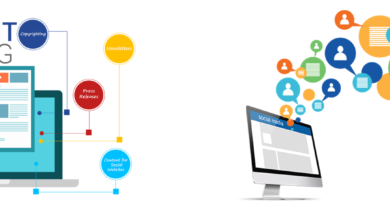Predictive vs. Adaptive Development: Choosing the Right Approach
In the world of software development, choosing the right methodology is crucial for the success of any project. The two most commonly debated methodologies are Predictive vs Adaptive Development. Each approach offers unique benefits and potential drawbacks, making the decision between them pivotal to the outcome of a project. In this article, we’ll explore the key differences between these two approaches, their advantages and disadvantages, and how to choose the best one for your specific project needs.
What is Predictive Development?
Predictive Development, also known as the Waterfall Model, is a traditional software development approach where the project is planned in detail from the beginning. This method relies on a linear and sequential process, where each phase of development must be completed before moving on to the next. The phases typically include requirements gathering, design, implementation, testing, deployment, and maintenance.
Key Characteristics of Predictive Development
- Detailed Planning: In predictive development, the project scope, timelines, and costs are determined early in the project lifecycle. This detailed planning provides a clear roadmap for the project.
- Sequential Phases: Each phase of the project follows a specific order, with no overlap between stages. This ensures that the project moves systematically from one stage to the next.
- Fixed Scope: The project scope is fixed at the outset, with little to no room for changes as the project progresses. This makes it easier to manage but less flexible.
- Comprehensive Documentation: Documentation is extensive in predictive development, providing detailed records of each phase, decisions made, and changes implemented.
Advantages of Predictive Development
- Clear Project Structure: The detailed planning and sequential phases create a well-defined structure, making it easier to manage large projects.
- Easier Cost Estimation: With a fixed scope and detailed planning, it’s easier to estimate the project’s total cost and allocate resources accordingly.
- Predictable Outcomes: Since the project is planned in detail from the beginning, the outcomes are more predictable, with fewer surprises along the way.
Disadvantages of Predictive Development
- Inflexibility: The fixed scope and rigid structure can make it challenging to adapt to changes in requirements or market conditions.
- Risk of Obsolescence: If the project takes a long time to complete, the technology or requirements may become outdated by the time the project is finished.
- Delayed Testing: Testing usually occurs at the end of the development process, which can lead to the discovery of critical issues late in the project.
What is Adaptive Development?
Adaptive Development, commonly associated with Agile Methodologies, is a more flexible and iterative approach to software development. In this model, the project is broken down into smaller, manageable chunks called iterations or sprints. Each iteration includes a full development cycle: planning, design, coding, testing, and review.
Key Characteristics of Adaptive Development
- Iterative Process: The project is developed in small increments, with each iteration delivering a functional part of the project. This allows for continuous improvement and adaptation.
- Flexibility: Adaptive development is highly flexible, allowing for changes in scope, design, and priorities as the project progresses.
- Collaborative Environment: Teams work closely with stakeholders throughout the development process, ensuring that the project remains aligned with business goals.
- Frequent Testing: Testing is integrated into each iteration, allowing for early detection of issues and continuous feedback.
Advantages of Adaptive Development
- Flexibility and Responsiveness: The ability to adapt to changing requirements and market conditions is one of the biggest strengths of adaptive development.
- Continuous Feedback: Regular testing and stakeholder involvement provide continuous feedback, helping to refine the project throughout its lifecycle.
- Reduced Risk: By delivering the project in small increments, the risk of complete failure is minimized, and any issues can be addressed early on.
Disadvantages of Adaptive Development
- Uncertain Costs: The flexibility of adaptive development can make it difficult to predict the total cost of the project, as the scope may change over time.
- Potential for Scope Creep: The iterative nature of adaptive development can lead to scope creep, where additional features are continually added, increasing the project’s complexity and duration.
- Demanding on Teams: Adaptive development requires a high level of collaboration, communication, and flexibility from the development team, which can be demanding.
Key Differences Between Predictive and Adaptive Development
Planning and Documentation
Predictive development emphasizes detailed planning and comprehensive documentation. Everything is planned out in advance, and extensive documentation ensures that all aspects of the project are clearly defined and recorded. In contrast, adaptive development prioritizes flexibility and iterative progress, with planning done on a per-iteration basis and documentation kept to a minimum to avoid slowing down the process.
Flexibility and Adaptability
One of the most significant differences between the two approaches is flexibility. Predictive development is rigid, with a fixed scope and sequential phases, making it difficult to adapt to changes. Adaptive development, on the other hand, is inherently flexible, allowing for adjustments in scope, design, and priorities throughout the project.
Risk Management
Risk management differs between these two approaches as well. Predictive development attempts to minimize risk through detailed planning and fixed scope, but it can be vulnerable to risks that emerge from changes in technology or market conditions. Adaptive development mitigates risk by delivering the project in small increments, allowing for continuous feedback and early detection of issues.
Stakeholder Involvement
In predictive development, stakeholders are usually involved at the beginning and end of the project, with limited interaction in between. Adaptive development, however, encourages continuous stakeholder involvement, ensuring that the project remains aligned with business goals and can be adjusted based on feedback.
When to Choose Predictive Development
Large-Scale Projects with Well-Defined Requirements
Predictive development is well-suited for large-scale projects where the requirements are clearly defined and unlikely to change. The detailed planning and structured approach provide a clear roadmap, making it easier to manage complex projects with multiple dependencies.
Projects with Fixed Budgets and Timelines
If the project has a fixed budget and timeline, predictive development is a good choice. The detailed planning and fixed scope make it easier to estimate costs and allocate resources, ensuring that the project stays within budget.
Projects with Low Risk of Change
For projects where the risk of change is low, such as regulatory or compliance-driven projects, predictive development offers a stable and controlled environment. The fixed scope and sequential phases reduce the likelihood of unexpected changes disrupting the project.
When to Choose Adaptive Development
Projects with Evolving Requirements
Adaptive development is ideal for projects where the requirements are expected to evolve over time. The flexibility of this approach allows the project to adapt to changing needs, ensuring that the final product meets the current business goals.
Innovation-Driven Projects
For projects focused on innovation, adaptive development provides the necessary flexibility to experiment, iterate, and refine the product. The iterative process allows for continuous feedback, helping to shape the project as new ideas and opportunities emerge.
High-Uncertainty Projects
In situations where there is a high level of uncertainty, such as new product development or market-driven projects, adaptive development is a better fit. The ability to respond to changes quickly and adjust the project’s direction based on feedback helps to mitigate risks and maximize opportunities.
Hybrid Approaches: Combining Predictive and Adaptive Development
In some cases, a hybrid approach that combines elements of both predictive and adaptive development may be the best solution. This can involve using predictive methods for certain parts of the project, such as planning and requirements gathering while adopting adaptive methods for implementation and testing. A hybrid approach allows organizations to benefit from the structure and predictability of predictive development while maintaining the flexibility and responsiveness of adaptive development.
Advantages of Hybrid Approaches
- Balanced Flexibility and Structure: A hybrid approach offers the best of both worlds, providing a structured framework with the flexibility to adapt to changes as needed.
- Improved Risk Management: By combining predictive planning with adaptive execution, organizations can better manage risks and respond to challenges as they arise.
- Tailored Solutions: A hybrid approach can be tailored to the project’s specific needs, ensuring that the methodology aligns with the project’s goals and the organization’s capabilities.
Disadvantages of Hybrid Approaches
- Complexity: Managing a hybrid approach can be complex, as it requires balancing the different methodologies and ensuring they work together effectively.
- Potential for Misalignment: If not managed carefully, a hybrid approach can lead to misalignment between different project parts, resulting in confusion and inefficiencies.
Conclusion
Choosing between predictive and adaptive development depends on various factors, including the nature of the project, the level of uncertainty, and the organization’s capabilities. Predictive development offers a structured, linear approach that is well-suited for projects with well-defined requirements and low risk of change. On the other hand, adaptive development provides the flexibility to respond to evolving requirements and market conditions, making it ideal for innovation-driven projects. In some cases, a hybrid approach may offer the best solution, combining the strengths of both methodologies to achieve the desired outcomes.
Ultimately, the key to success lies in understanding the unique needs of your project and selecting the approach that best aligns with those needs. Whether you choose predictive, adaptive, or hybrid methodology, the right choice will set your project on the path to success.



